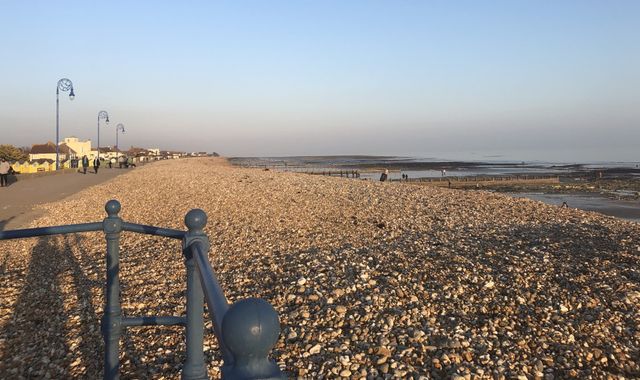COVID-19: UK’s R number drops sharply to between 0.8 and 1 – suggesting lockdown is slowing spread of virus
Written by News on 23/01/2021
The coronavirus R number in the UK has fallen sharply since last week, suggesting the lockdown is slowing the spread of coronavirus.

The R, which refers to the number of people that an infected person will pass COVID-19 on to, is between 0.8 and 1 across the UK, according to the Science and the Scientific Advisory Group for Emergencies (SAGE).
Live COVID news from UK and around the world
Last week, the R – or the reproduction number – was between 1.2 and 1.3 for the UK as a whole.
The number of new infections is also estimated to be shrinking by between 1% and 4% every day, while last week it was rising by between 2% and 5%.
Scientists advising the government said that all regions of England have seen falls in the R number and growth rate estimates compared with last week, and R is below or around 1 in every region.
However, they warned that despite the reductions, case levels “remain dangerously high and we must remain vigilant to keep this virus under control, to protect the NHS and save lives”.
SAGE scientists said: “It is essential that everyone continues to stay at home, whether they have had the vaccine or not.
“We all need to play our part, and if everyone continues to follow the rules, we can expect to drive down the R number across the country.”
The update comes as separate figures from the Office for National Statistics (ONS) showed there had been a slight drop in the number of people infected with coronavirus in England after lockdown measures were introduced.
Subscribe to the Daily podcast on Apple Podcasts, Google Podcasts, Spotify, Spreaker
An estimated one in 55 people in private households in England had COVID-19 between 10 and 16 January, down from one in 50 people for the Christmas period of 27 December to 2 January.
The data is from a random sample of people, including those with no symptoms, but does not include care homes, hospitals or other institutional settings.
Meanwhile, a cabinet minister has told Sky News that the full closure of the UK’s borders has been “considered” by the government amid concerns about new COVID variants being imported from abroad.
Everyone who tests positive for coronavirus could also soon receive a one-off payment of £500, in a government move to persuade more people to get a test and self-isolate after a positive result.
Analysis: The epidemic is not shrinking fast, despite lockdown
By Thomas Moore, science correspondent
The latest official measure of the virus’s spread is good news. Mostly.
For the first time in many weeks the R number is below 1, indicating that the UK’s epidemic is shrinking.
The SAGE committee, which advises the government on science, estimates that the reproduction number is between 0.8 and 1.0 – a range because it is based on several different models.
It means that every 10 infected people will pass the virus on to between 8 and 10 others.
The epidemic is not shrinking fast, despite lockdown.
SAGE believes the number of infections is falling between 1 and 4% a day.
We get a lot of data every week, sometimes conflicting. But the R number is fairly consistent with the ONS stats.
London, the South East and East of England shows the sharpest deceleration in cases, with an R number broadly between 0.6 and 1.0 and a reduction in infections of roughly between 2 and 8% a day.
The ONS also pointed to a fall in infections in these regions. They went into Tier 4 first and cases had begun to level off even before the country went into lockdown.
Elsewhere the R number remains a little higher, notably the Midlands, North East and Yorkshire, North West and South West, where the estimate straddles 1, so there is uncertainty whether the epidemic is growing or shrinking.
There will be concern that cases may still be rising in some regions – the ONS pointed to a sharp rise in the North East.
We are dealing with a more transmissible virus and it may be that tougher controls will be needed, perhaps regionally, to bring the epidemic under control across the country.
(c) Sky News 2021: COVID-19: UK’s R number drops sharply to between 0.8 and 1 – suggesting lockdown is slowing spread of virus







